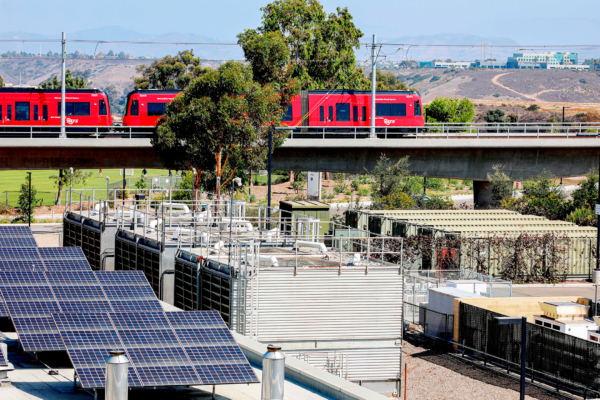California Governor Gavin Newsom announced on the 19th that the battery storage capacity needed to achieve aggressive climate action goals has increased by nearly 2,000% since 2019.
According to the latest data from California, the state has added 2,300 megawatts (MW, 1 megawatt = 1 million watts) of battery storage capacity since last September. This capacity is enough to power 400,000 households during peak electricity demand periods, bringing the total state storage capacity to 15,763 megawatts, which represents 30% of California’s goal to reach 52,000 megawatts of storage capacity by 2045.
“California is rapidly increasing its battery storage capacity at an unprecedented pace, continuing to build the grid of the future,” stated Newsom. “The key to achieving a cleaner and more reliable grid lies in batteries – outside of China, there is nowhere else globally that can match our rapid deployment scale.”
Battery storage is crucial to supporting renewable energy grids. According to the Governor’s office, these systems store wind and solar energy during off-peak hours and release power back to the grid during peak periods, enhancing grid stability and reliability.
In 2019, California’s battery storage capacity was 771 megawatts. According to a report from the California Energy Commission on the 19th, this number has been steadily increasing each year and had reached 15,763 megawatts by the end of January.
According to the Commission’s data, an additional 8,600 megawatts of storage capacity will be put into use by the end of 2027.
Mojave in Kern County currently holds the largest storage capacity, with 1,500 megawatts.
Blythe, located near the Arizona border, is the second-largest storage city with a capacity of 1,200 megawatts.
On a smaller scale, tens of thousands of households and businesses have battery storage systems, providing backup power and flexibility for residences, schools, and commercial establishments. The total capacity of these distributed storage systems is approximately 2,500 megawatts, accounting for about 16% of the state’s total capacity.
California projects that by 2045, it will need 48,000 megawatts of battery storage and 4,000 megawatts of long-duration storage, including technologies capable of storing power for over 10 hours.
According to data from Newsom’s office, California effectively operated on 100% clean energy for the equivalent of 51 days last year, with the grid achieving 100% clean energy operation an average of 3 days out of every 5 days.
However, solar energy also has its drawbacks.
On January 16th, a fire broke out at Vistra Energy’s plant in Moss Landing, Monterey County. The facility housed 110,000 lithium-ion batteries used for storing solar energy. Firefighters were forced to let the fire burn itself out due to the difficulty of extinguishing fires involving lithium batteries, causing toxic air pollution in Central California.
Lithium batteries can self-ignite when exposed to air or water, and current firefighting methods struggle to completely extinguish these fires.
In August of last year, a Tesla semi-truck caught fire on Highway 80, leading to a closure of the highway for several hours. The battery pack temperature soared to 1,000 degrees, releasing toxic gases and posing a public safety risk.
In the same month, a diesel truck carrying 6 lithium-ion batteries caught fire in Southern California, resulting in the closure of another major highway and affecting thousands of drivers. Following these incidents, California lawmakers urged Newsom to reconsider his plan to fully ban the sale of new gasoline-powered vehicles before 2045.

